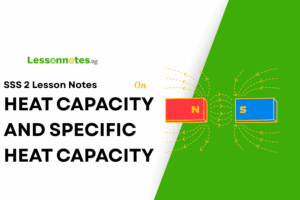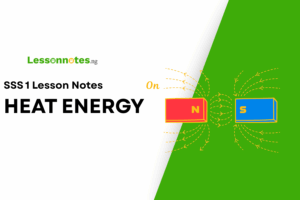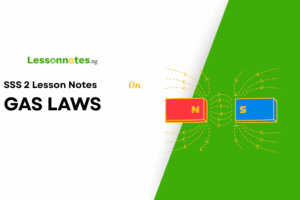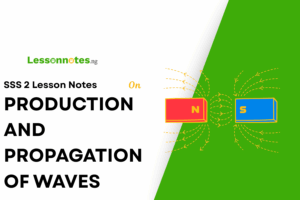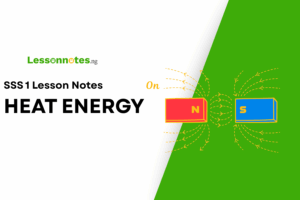Vapour Pressure SS2 Physics Lesson Note
Download Lesson NoteTopic: Vapour Pressure
VAPOUR PRESSURE
When a liquid evaporates in a closed container, the vapour formed above the liquid exerts pressure. According to kinetic molecular theory, the molecules of the vapour are in constant motion and will hence exert pressure just like the molecules of a gas. This pressure is called the vapour pressure of the liquid.
Saturated and unsaturated vapour pressure and its relation to boiling
A saturated vapour is a vapour that is in contact with its liquid within a confined space. When the enclosed space above a liquid is saturated with vapour molecules and can hold no more molecules, the pressure exerted by this saturated vapour is said to be the saturated vapour pressure (s. v. p) of the liquid. The vapour is said to be saturated when the number of molecules escaping from the liquid per unit is equal to the number returning to the liquid per unit of time. The saturated vapour is thus said to be in a state of dynamic equilibrium with its liquid. Saturated vapour pressure increases with temperature.
On the other hand, the unsaturated vapour is the vapour which is not in contact with its liquid in a confined space. It is not in dynamic equilibrium with its liquid. The rate at which the liquid evaporates is greater than the rate at which the liquid condenses. Thus, the pressure exerted by a vapour which is not in contact with its liquid in a confined space is called unsaturated vapour pressure.
HUMIDITY
Humidity is the measure of the wetness of the atmosphere. The exact amount of water vapour in the atmosphere at a given temperature is called absolute humidity. At higher temperatures, the atmosphere contains more water vapour compared to water vapour present at low temperatures.
RELATIVE HUMIDITY
Relative humidity is defined as the ratio of the mass of water vapour per unit volume present in the atmosphere to the mass per unit volume of the water vapour needed to saturate the atmosphere.

Relative humidity=
S.v.p at dew point × 100%
S.v.p at room temp
An instrument known as the hygrometer is used to measure the relative humidity of air.
DEW POINT AND ITS RELATIONSHIP TO WEATHER
The dew point is the temperature at which the water vapours present in the air is just sufficient to saturate it. It is also defined as the temperature at which the pressure of the water vapour is equal to the saturation vapour pressure.
Mist – mist occurs in wet air with high relative humidity above 75 when water vapour in the air is cooled below its dew point. Mist limits visibility to about 1000m or less.
Fog – fog is formed when water vapour in the air is cooled down to its dew point. Fog is of more effect than the mist as it can reduce visibility to less than 200m.
ASSIGNMENT
- The temperature at which the saturated vapour pressure of a liquid is equal to the atmospheric pressure gives rise to a phenomenon called (a) boiling point (b) melting point (c) evaporation (d) freezing point (e) no answer
- The instrument used to measure the relative humidity of an environment is (a) hydrometer (b) hygrometer (c) humid-meter (d) hygroscope (e) none of the above
- Which of these statements is/are correct?
(i) The atmosphere above is cooler than the ones below
(ii) for unsaturated vapour, the rate at which the liquid evaporates is greater than the rate at which the liquid condenses
(iii) mist has lesser weather effect than fog
(a) all of the above (b) (i) and (ii) only (c) (i) and (iii) only (d) (ii) and (iii) only (e) none of the above
- Which of these is true of saturated vapour pressure?
(i) The saturated vapour pressure of a liquid increases with temperature
(ii) saturated vapour pressure of a liquid does not have contact with the liquid
(iii) saturated vapour pressure is in a state of dynamic equilibrium with its liquid
(a) all of the above (b) (i) and (ii) only (c) (i) and (iii) only (d) (ii) and (iii) only (e) none of the above
- The temperature at which the water vapours present in the air are just sufficient to saturate it is referred to as
(a) relative humidity (b) vaporization (c) dew point (d) condensation point (e) no answer








